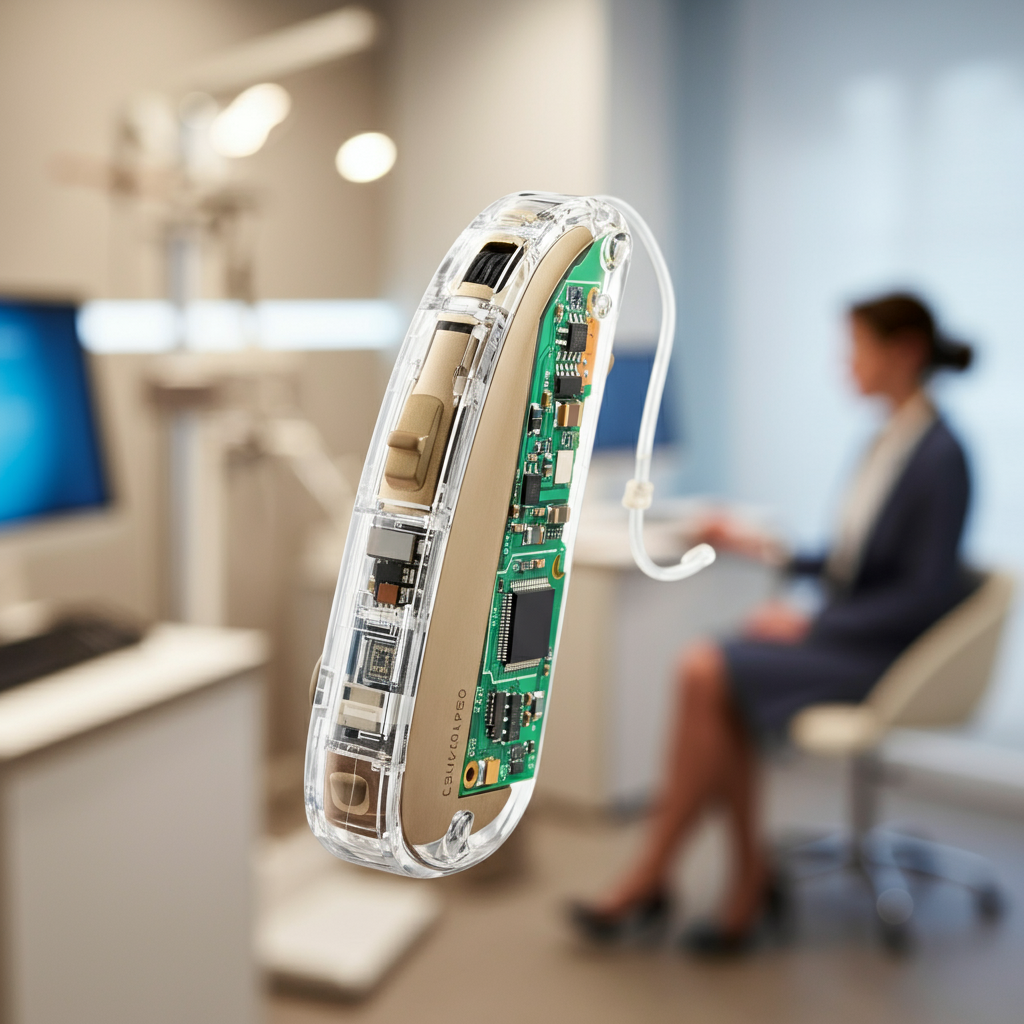The Ultimate Guide to Finding the Perfect Hearing Aid
Navigating the world of hearing aids can feel overwhelming, especially with the wide array of options now available. Digital technology, advanced features, and increasingly discreet designs have revolutionized how hearing aids look and perform. But how do you find the right one for you?
This guide will simplify the process by focusing on key aspects like hearing tests, the latest features, and invisible hearing aid options that cater to modern lifestyles. By the end of this post, you’ll have a clear roadmap for choosing the perfect hearing aid to fit your unique needs.
Understanding Hearing Aids
Before diving into specific options, it’s worth taking a moment to review what hearing aids are and how they work.
What Is a Hearing Aid?
A hearing aid is a small electronic device designed to amplify sound for individuals with hearing loss. Most hearing aids consist of three parts:
- Microphone: Picks up sound from the environment.
- Amplifier: Processes the sound and increases its volume.
- Speaker (Receiver): Sends the amplified sound into your ear.
While they may look simple, hearing aids are increasingly advanced, offering features that address different types of hearing loss and environments.
Who Needs a Hearing Aid?
Hearing aids are suitable for people experiencing mild, moderate, or severe hearing loss. If you find yourself:
- Frequently asking others to repeat themselves,
- Struggling to hear conversations in noisy places, or
- Turning up the volume on your TV or devices,
…you may benefit from a hearing aid. Consultation with an audiologist is essential to assess your specific needs.
Step 1: Get a Hearing Test
Your hearing aid journey starts with a thorough hearing test. Testing helps determine the extent of your hearing loss and identifies which frequencies you struggle to hear.
What Happens During a Hearing Test?
Hearing tests are typically conducted by audiologists. The process involves:
- Pure-Tone Testing: Listening to tones at different pitches and volumes.
- Speech Testing: Repeating back words spoken at various noise levels.
- Bone Conduction Testing (optional): Measuring the ability of your inner ear to hear sounds without using the eardrum.
After the evaluation, your audiologist will discuss the results, which are typically displayed in an audiogram. This report is key to selecting the right features and type of hearing aid for you.
Why is Testing Important?
Testing ensures you choose hearing aids that are customized to your specific level of hearing loss, rather than opting for a one-size-fits-all solution. Many hearing aid manufacturers offer risk-free trials following your test to help you determine the best fit.
Step 2: Explore Advanced Features
Modern hearing aids come with technology that makes them smarter and more customizable than older models. Understanding these features can help you make an informed decision.
Digital Noise Reduction
Struggling in loud environments like restaurants? Advanced hearing aids now come with digital noise reduction, which filters out background noise while enhancing the clarity of speech.
Directional Microphones
Hearing aids with directional microphones focus on sounds coming from specific directions. For instance, this feature can help you hear only the person directly in front of you during a conversation, reducing distractions from surrounding noises.
Bluetooth Connectivity
Many hearing aids now offer Bluetooth-compatible options, allowing you to connect directly to phones, TVs, and other digital devices. This provides a seamless listening experience for phone calls, music, or video streaming.
Rechargeable Batteries
Tired of replacing tiny batteries? Opt for a model with rechargeable batteries to keep things simpler and more convenient. Rechargeable hearing aids often come with portable charging cases for added ease.
Artificial Intelligence (AI) Integration
Some premium hearing aids use AI algorithms to learn your preferences over time, automatically adjusting settings based on your environment. For example, they can differentiate between quiet evenings at home and loud office meetings.
Step 3: Consider the Style of Hearing Aids
Hearing aids come in various styles and sizes, each catering to different levels of hearing loss and personal preferences.
Behind-the-Ear (BTE)
- Positioned behind the ear with tubing connecting to an earpiece.
- Suitable for mild to profound hearing loss.
- Offers durability and longer battery life.
Receiver-in-Canal (RIC)
- Similar to BTE but with a smaller, less noticeable design.
- Ideal for mild to severe hearing loss.
- Enhanced sound quality with reduced feedback.
In-the-Ear (ITE)
- Custom-molded to fit the outer portion of your ear.
- Best for mild to moderate hearing loss.
- Easier to handle, thanks to its larger size.
Completely-in-the-Canal (CIC)
- Fits entirely within the ear canal, making it nearly invisible.
- Ideal for mild to moderate hearing loss.
- Discreet but with a shorter battery life.
Invisible-in-the-Canal (IIC)
- The most discreet style, fitting deeply into the ear canal.
- Suitable for mild to moderate hearing loss.
- Light on additional features due to its compact size.
Step 4: Compare Invisible Hearing Aid Options
Invisible hearing aids, like IIC and some CIC models, are a popular choice for those prioritizing subtlety. They're also great for active lifestyles since they’re less likely to shift during movement.
Ideal for Active Environments
Invisible hearing aids are designed to stay secure within the ear canal, making them ideal for exercising, outdoor activities, and workplace use.
Key Limitations
Keep in mind that their small size may limit battery life and reduce the number of advanced features available compared to larger styles. Discuss these trade-offs with your audiologist.
Step 5: Check for Warranties and Trials
Hearing aids can be a significant investment. Always look for manufacturers that offer:
- Risk-Free Trials (typically 30–90 days).
- Comprehensive Warranties covering repairs and adjustments for at least one year.
- Lifetime Support for Fittings and Programming Adjustments.
Step 6: Leverage Exclusive Deals and Subscriptions
Many providers now offer subscription plans to make hearing aids more affordable. With a subscription, you can:
- Spread the cost over manageable monthly payments.
- Access regular servicing and warranty extensions.
- Upgrade to the latest models as new technology emerges.
Find the Hearing Aid That Fits Your Life
Choosing a hearing aid doesn’t have to be daunting. By starting with a professional hearing test, exploring advanced features, and prioritizing comfort and style, you’ll find a solution tailored to your lifestyle.
If you’re ready to take the next step, reach out to a local audiologist or hearing specialist today. Have questions about specific models or features? Drop us a comment below or explore our comprehensive reviews on the latest hearing aids available.
Leave a comment
Your email address will not be published. Required fields are marked *




